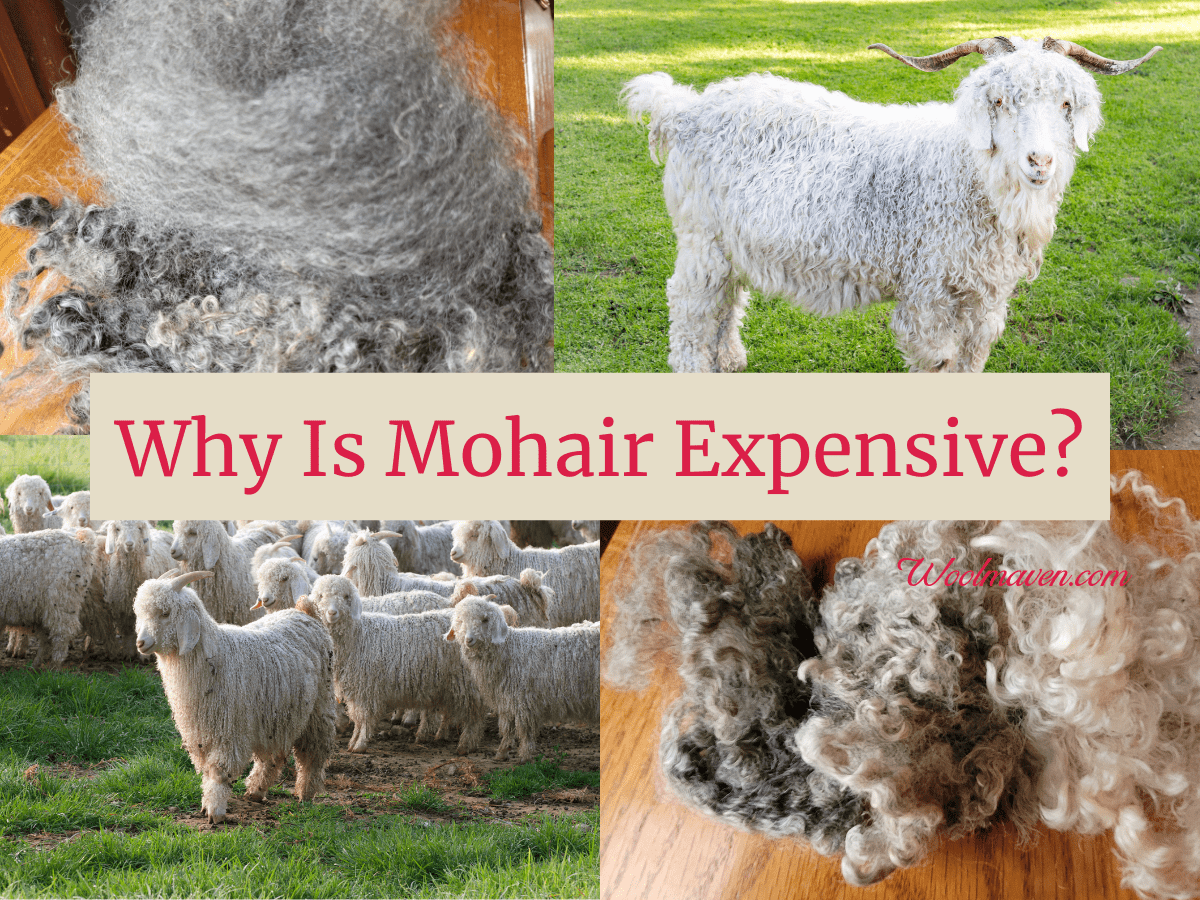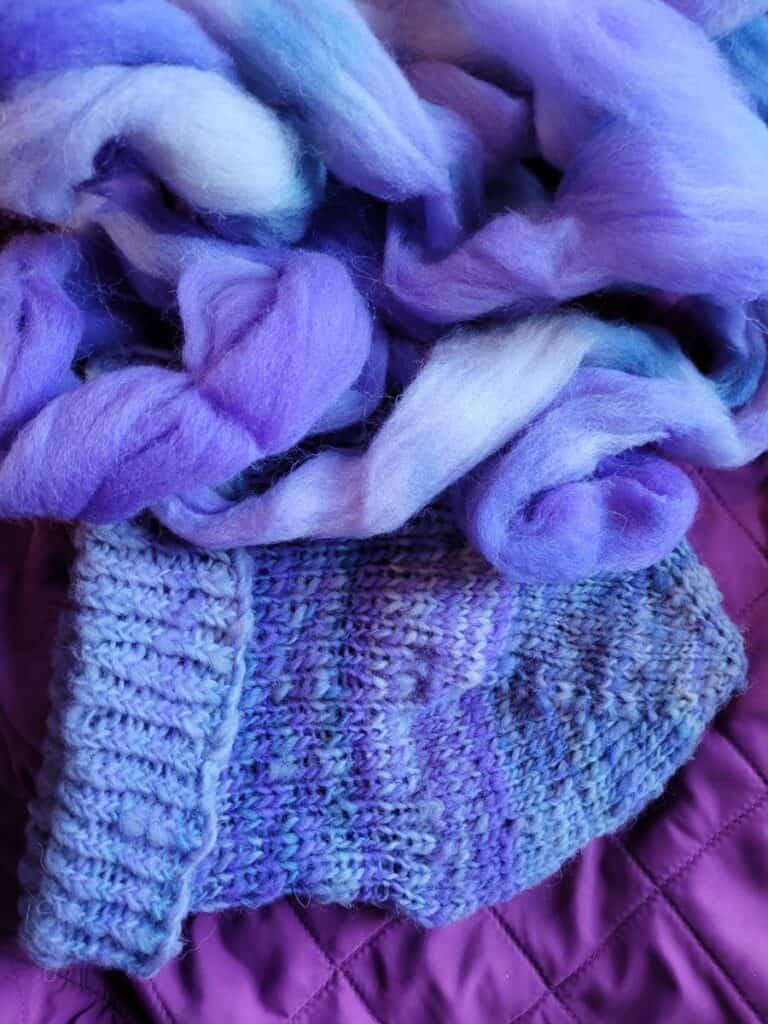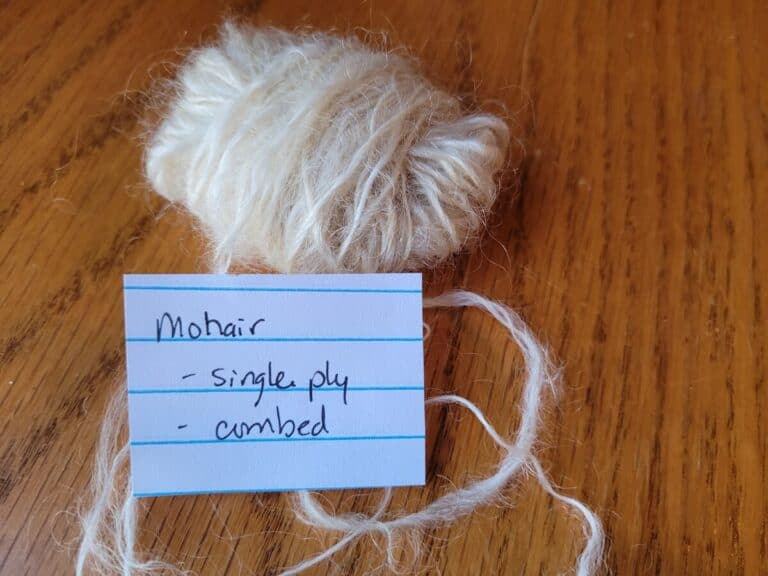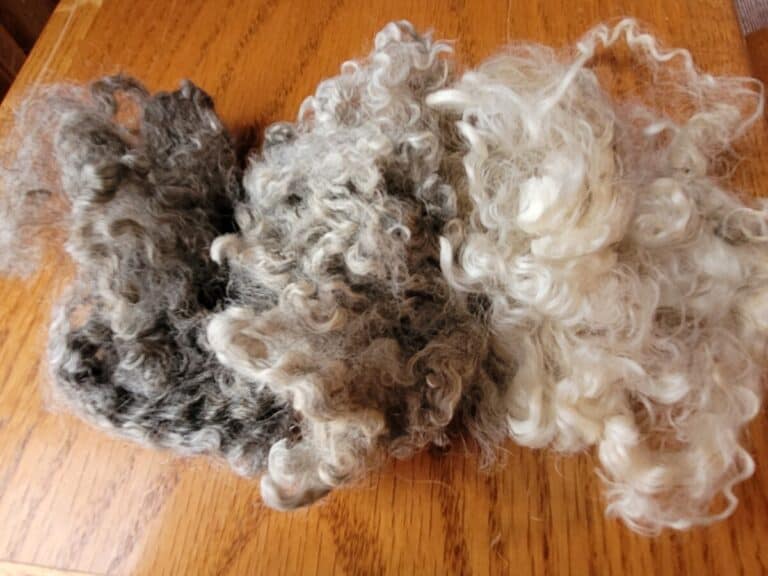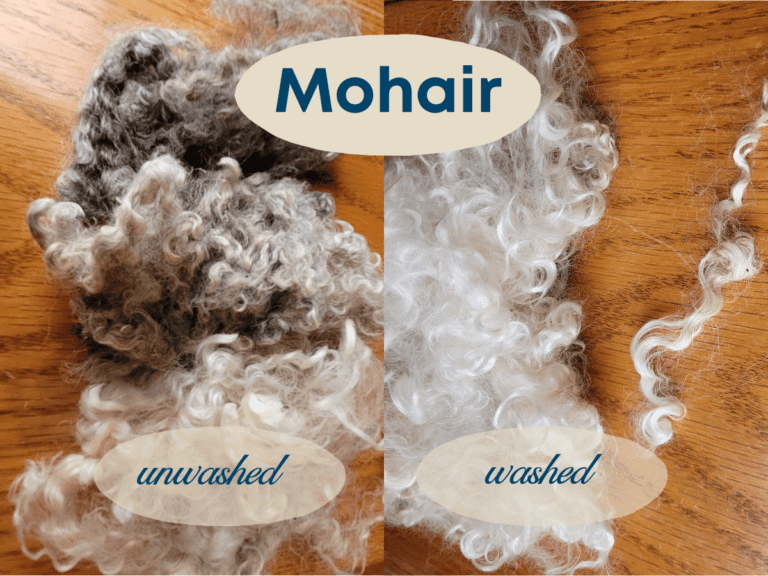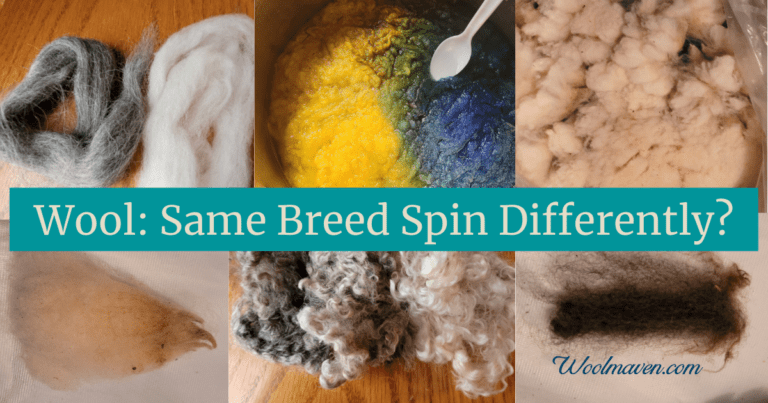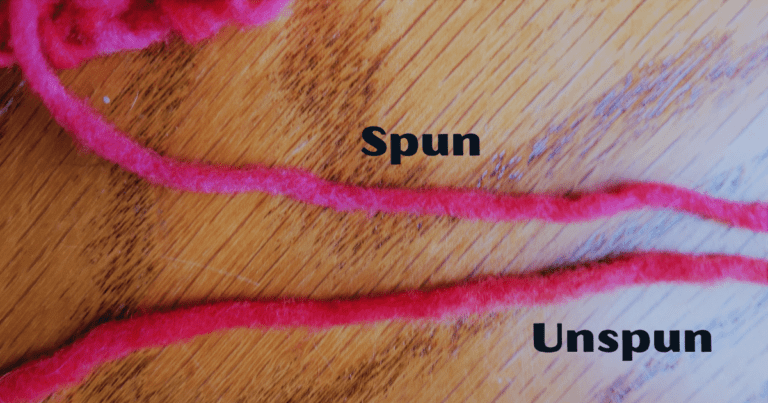Why Is Mohair Expensive?
Mohair is an amazing material that has tons of wonderful properties, for both clothing and for hand crafts, like spinning and weaving.
Most mohair also seems to have something else, a fairly high price tag! Why is that? What is going on with mohair that makes it so expensive?
Mohair is expensive because it is a natural fiber that takes time to grow on the goats and the fiber changes as the goat ages. Generally speaking, younger goats produce finer fiber.
New to spinning and want some help? Try my Beginning Spinner Course, it has simple, step by step instructions and is designed to take you from beginner to confident spinner!
Mohair takes time to grow
Mohair is a high quality, natural fiber that is produced by angora goats and natural fibers take time to grow. Natural fibers are also variable and commonly change with the age of the animal.
Unlike petroleum based fibers that are made as needed in a factory, mohair has to be grown by the goat and that takes time. All natural processes take longer than their modern fake version!
Not all mohair is the same
Not all mohair is the same, as far as quality or things that you can make with it. Mohair varies in length and fineness.
The mohair used to make knitted or crocheted garments is kid mohair and the preferred mohair for making men’s suit fabric is yearling also called goatling.
Choosing Mohair For Handspinning shows you the different grades of mohair and what each is best for, mohair is used to make a huge variety of items!
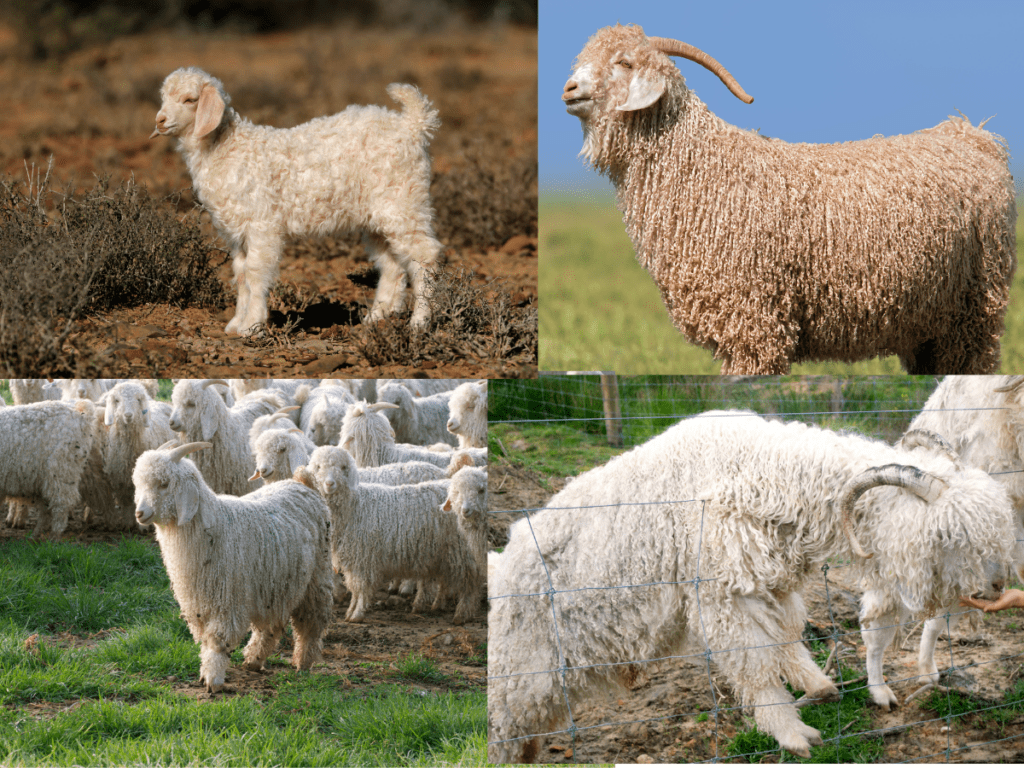
Loss when mohair is processed
While mohair is actually a fast growing fiber, it still takes a while to grow and all that time it’s naturally accumulating grease, just like your hair would if you didn’t wash it for 6 months!
Mohair has lanolin that must be washed out
The natural grease on mohair (and wool) is called lanolin and it needs to be washed out of the fiber before the fiber can be used for spinning, weaving or dyeing.
Once the mohair is clean, meaning the lanolin has been washed out, the mohair will weigh less, maybe a lot less, depending on how much lanolin was in the fleece.
The percentage of lanolin in raw or unwashed mohair can be anywhere from 20-50%!
This means that if you started with 10 pounds of mohair, you end up with anywhere from 5-8 pounds of washed mohair. This increases the price per pound of washed fiber.
How To Wash Mohair For Handspinning shows you how to wash small amounts of mohair to get it ready for carding or combing, then spinning!
Each processing has fiber loss
Now, we move on to the next stages of fiber processing, where the mohair is carded, combed and possibly dyed and then finally spun or woven.
In both the carding and the combing steps there will be fiber loss, due to pulling out any remaining debris, dropping out any short fibers and combing out any tangled spots.
Each processing step adds to the cost of the fiber and are necessary to get smooth and consistent ready to spin mohair.
The reason that the processing loss matters to you is that this is one of the many things, like caring for the goats and paying the mill workers, that are all rolled up into the price of your finished mohair garments or yarns.
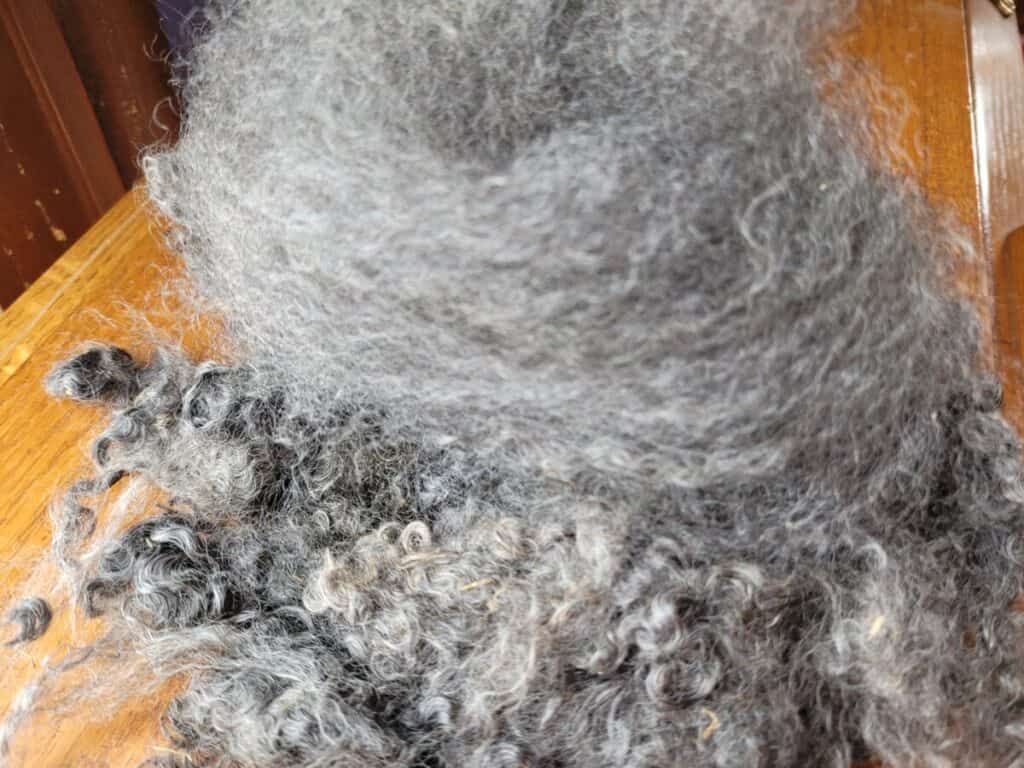
As angora goats age fiber gets more coarse
Unless the goats being raised for mohair have excellent fiber genetics, they will start to grow more coarse coats as they age. This is the case for most commercial mohair herds.
Growing a more coarse fiber as they age means that the goats will no longer produce the high quality mohair that the clothing market requires when they are adults.
But, the adult goats are the moms and dads of the young goats, which are producing the highest quality fiber, so you have to feed and care for lower quality fiber animals to get any of the higher quality fiber animals to be born and raised by their moms!
Raising commercial mohair must be profitable
Raising angora goats for commercially (meaning as a business, not a hobby) must be profitable for the farmer or rancher to continue his or her business.
This means that for the farmer or rancher raising commercial angora goats, the cost of keeping the entire herd, plus any help required to run the operation, must be paid for by the mohair.
Not to mention herd improvements, cost of land and feed, taxes and, of course, profit for the farmer or rancher since this is a business!
It’s easy to overlook the fact that the cost of mohair is based on normal economics, meaning supply and demand.
If the price for mohair is high, more folks are interested in raising angora goats to fill that demand.
If the price for mohair is low, most folks would sell some of the goats they have or get out of raising mohair all together, rather than continue and lose money.
The Mohair Growers Association is in South Africa and is a commercially focused angora goat group if you want to see more of the larger farm/ranch style angora goat operations.
New to spinning and want some help? Try my Beginning Spinner Course, it has simple, step by step instructions and is designed to take you from beginner to confident spinner!
Dry climate is best for angora goats
Another challenge to mohair is that a dry climate is best for raising goats, in general, and angora goats in particular.
This means that the areas that are the most suited for angora goats are also the areas that have the least water or feed for those goats, but have the best climate for the mohair.
Here are the options:
- you can have angora goats in an area with plenty of feed and water, but have a constant battle with parasites, overgrown hooves and produce lower quality mohair
- you can raise angora goats in a dry area that naturally has less feed and water but has less parasite problems, little to no need to trim hooves and grow high quality mohair
The reason this matters to you is that anytime something is area specific it makes the thing harder to find and consequently raises the price of it when you do find it.
A few angora goat raisers live in humid parts of the world, but it’s not as good of a fit for the goats as a drier environment, so the goats are generally raised in lower numbers in these areas.
Eastern Angora Goat & Mohair Association is in the eastern (humid) part of the US with the bulk of mohair, at least in this country, grown in the drier parts of Texas.
Only high quality mohair is expensive
As you have seen from reading this far, there are many steps involved in getting mohair from the goat to fabric, all of which involve cost and loss, and most mohair will not make the cut!
Most mohair is not expensive, just the high grade garment quality mohair, as a finished product, is.
Mohair Council USA has an informative website going over the ranch standards as well as the fiber grades, processing and uses for mohair.
New to spinning and want some help? Try my Beginning Spinner Course, it has simple, step by step instructions and is designed to take you from beginner to confident spinner!

